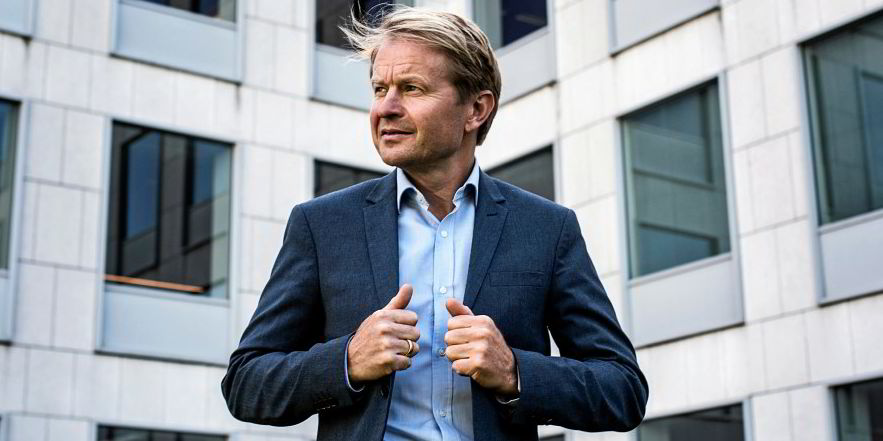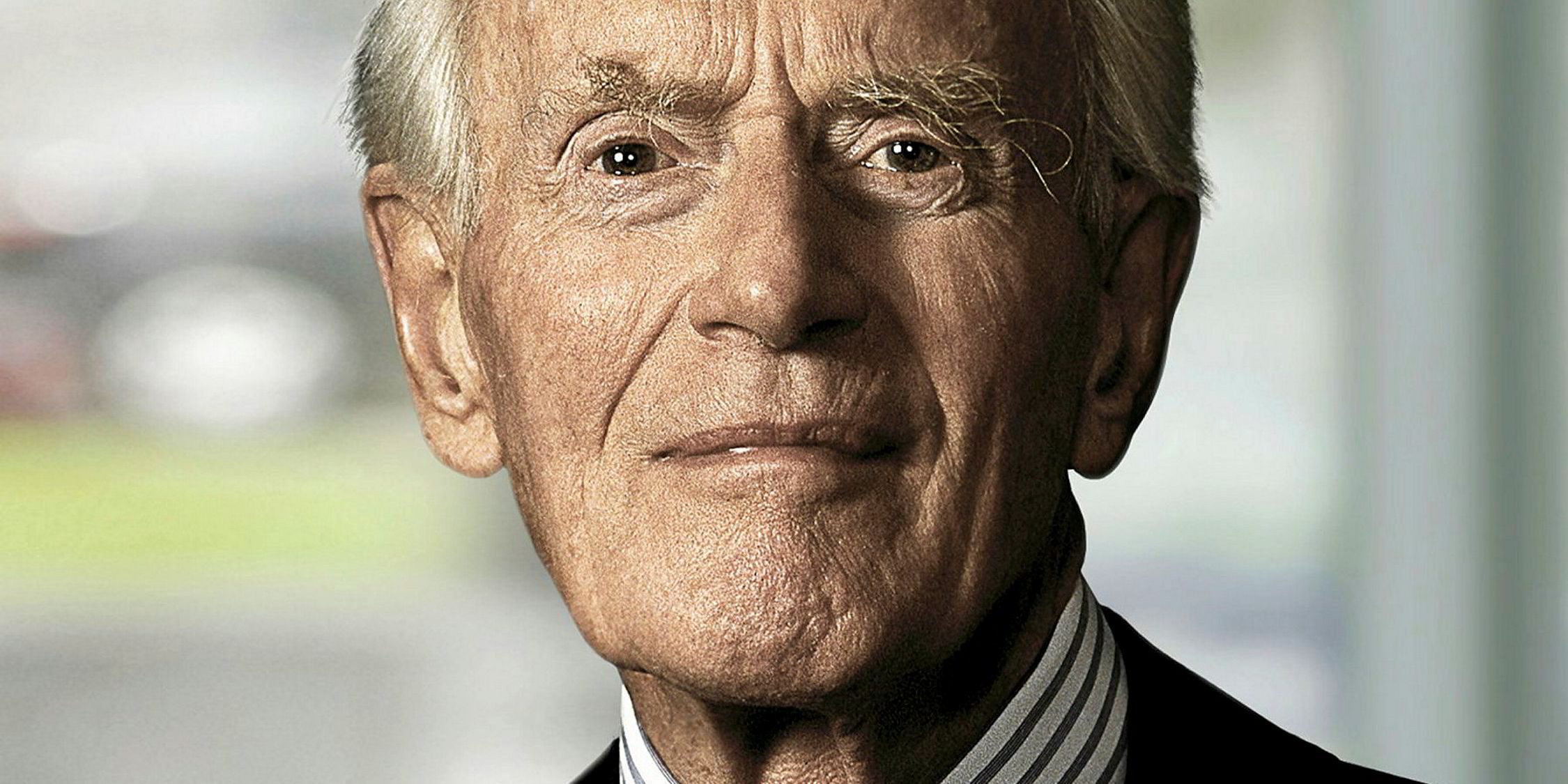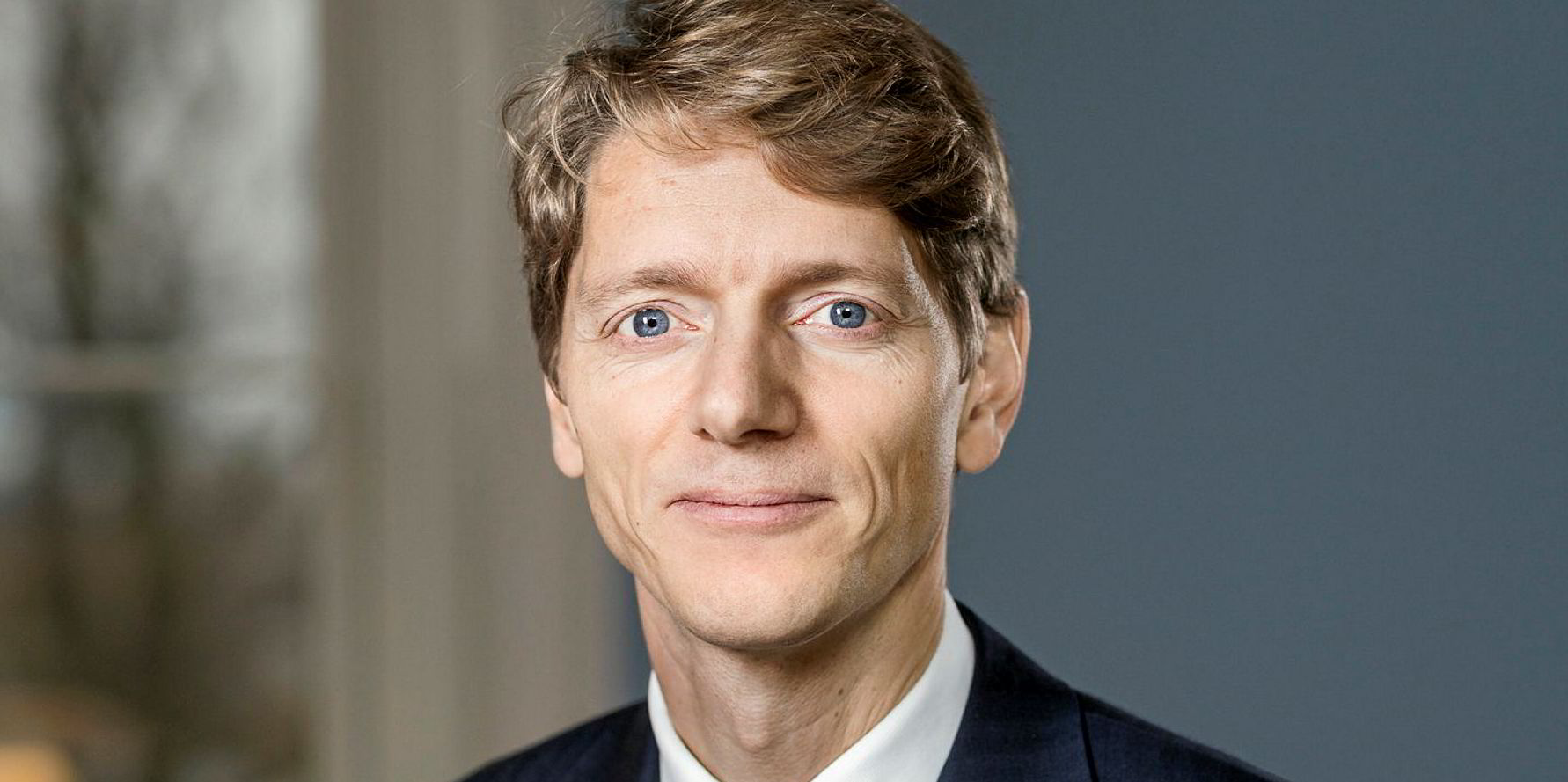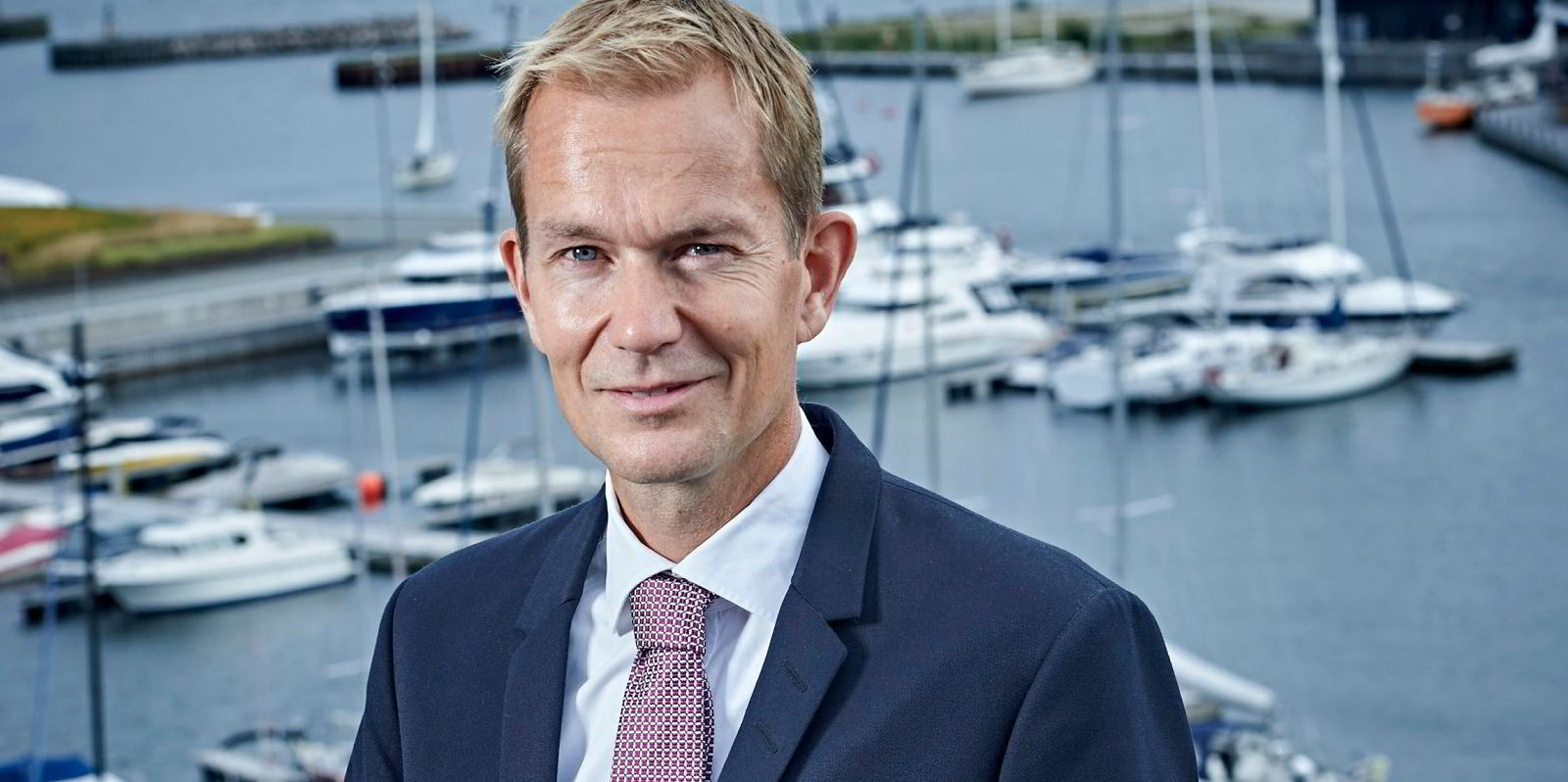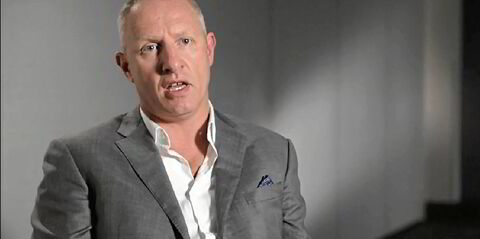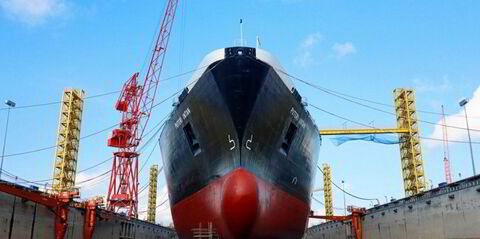If shipping needed a poster boy to front its greatest challenge, Bo Cerup-Simonsen would be a good candidate.
A Danish naval architect turned academic, with a record in delivering sustainability projects for business, he has the hallmark of someone whose time has come.
Last June, he was named chief executive of the new Maersk Mc-Kinney Moller Center for Zero Carbon Shipping, with responsibilities as weighty as that title suggests.
Set up with a DKr400m ($65m) donation from the AP Moller Foundation — the Moller family institution that has a controlling stake in one of the world’s biggest and most influential shipping groups — its mission is to help find pathways to taking greenhouse gas pollution out of shipping.
For an industry that has burned carbon fuels for the past 150 years, enabling it to facilitate the huge growth of trade and global wealth, the challenge is daunting. But with the existential threat that climate change poses, it is a challenge that cannot be avoided.
“It’s an amazing challenge,” Cerup-Simonsen says. “I’ve never had a challenge like this in my entire life. Personally, I find it very stimulating and fascinating.”
That challenge is to slash the near 1bn tonnes of carbon pollution that shipping emits each year, by 50% from 2008 levels under current IMO projections, or to net zero under the more ambitious targets embraced by some countries and companies such as AP Moller-Maersk.
It is a challenge in line with AP Moller Holding’s philosophy of nyttig virksomhed, which loosely translates as “socially useful business”.
“We can fix it,” says Cerup-Simonsen by video from the centre’s headquarters in central Copenhagen, which few have been able to share due to the pandemic lockdown. “It is fixable, and we have to do it.
“The other beautiful thing about this is we still have time to do it. It is not too late, but now is the time to act,” he says with characteristic quiet force. “It’s like when you wait till Sunday evening writing an essay that’s due Monday morning! Now is the time to do it.
“There is a famous saying by Bernstein, ‘To achieve great things, two things are needed: a plan and not quite enough time’. It’s great to see the sense of urgency increasing across the industry, and that’s tremendously helpful.”
Creation of the centre was sparked by the AP Moller Foundation’s desire to launch a shipping sustainability project for the good of wider society. The foundation was set up in 1953 by group founder AP Moller to “safeguard the long-term viability of the group and control by the Maersk family”.
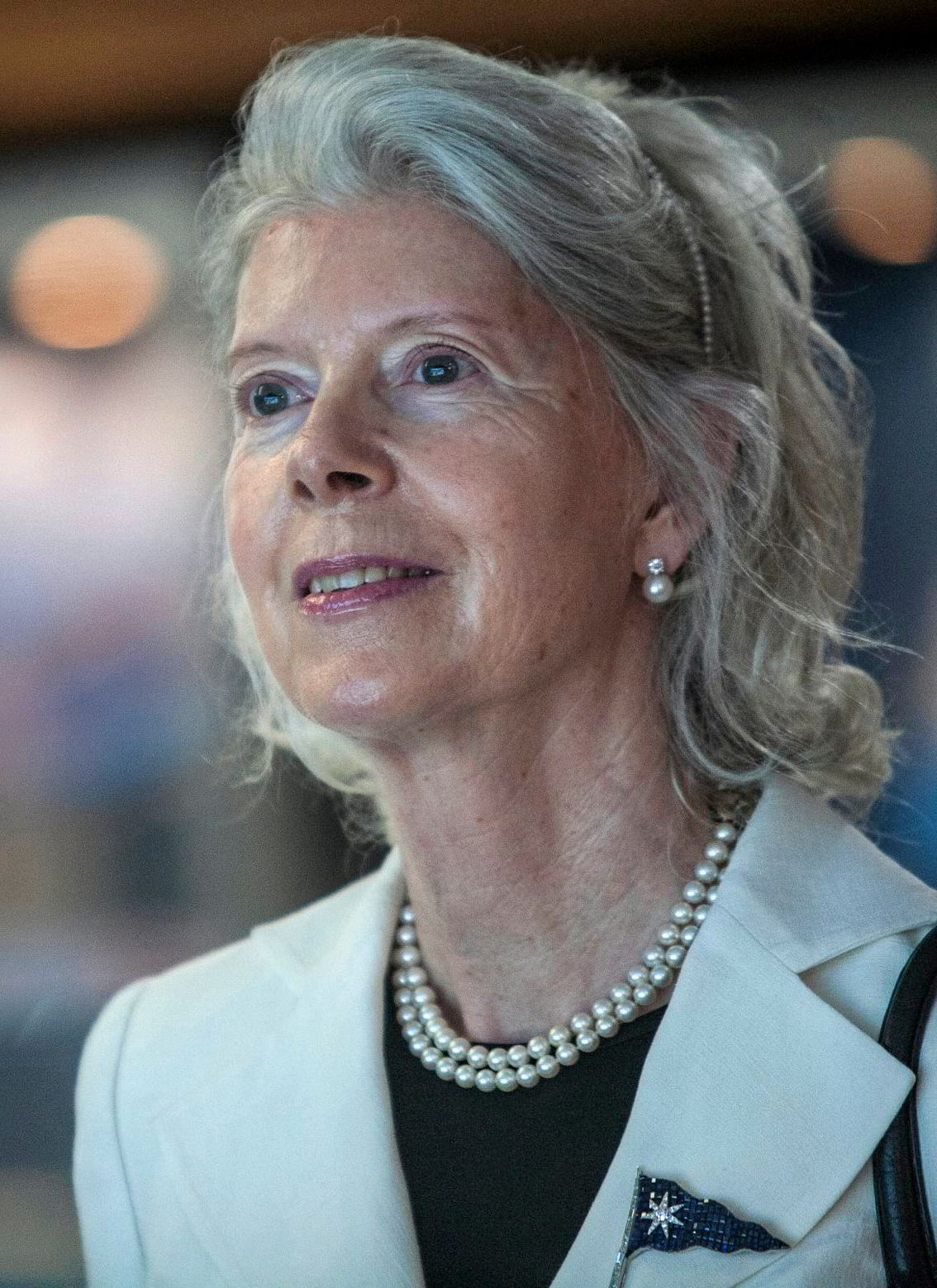
With that mandate in mind, its chairman, family head Ane Uggla, turned to Maersk for ideas. The most potent and relevant of those ideas was chosen: to set up a not-for-profit permanent institution to support and accelerate the transition towards zero-carbon shipping.
As details of the concept were developed, Cerup-Simonsen was asked to take the lead, an “extremely exciting opportunity” he says he was honoured to accept.
The centre is chaired by Maersk boss Soren Skou, with directors who include DFDS chairman and former head of Maersk Drilling Claus Hemmingsen; former European climate commissioner Connie Hedegaard; Guy Platten, secretary general of the International Chamber of Shipping; and Asgeir Sorensen, a technology entrepreneur and professor of maritime technology at the Norwegian University of Science & Technology.
Already employing a team of 40, with some well-known names including former Lauritzen chief executive Mads Peter Zacho, it will have 70 staff by the end of this year, with plans to reach 100 next year.
Cerup-Simonsen was far from unknown at Maersk, having held several influential positions over the years, although immediately before his appointment he was working for Royal Caribbean Cruises as vice president of newbuild strategy and portfolio. He remains an advisory board member at the cruise company.
Having gained a PhD in naval architecture at the Technical University of Denmark, he went into academia before joining class society DNV as head of maritime technical consultancy.
It is not too late, but it’s like when you wait till Sunday evening to write an essay that’s due Monday morning!
Bo Cerup-Simonsen
But it was the next six years he spent as head of Maersk Maritime Technology between 2008 and 2014 that were the springboard to his current role. He was one of the driving forces behind the company’s Triple-E series of containerships.
The ground-breaking vessels of 18,000 teu-plus were the biggest yet built, and one-third more fuel-efficient per container than earlier-generation 13,000-teu ships.
Yet now, less than a decade after the first Triple-E was launched in 2013, the ships that Cerup-Simonsen helped bring into the world are part of the carbon problem. With twin 39,800hp MAN B&W engines, they are estimated to burn more than 100 tons of high-sulphur fuel a day, flushing sulphur pollution into the ocean with open-loop scrubbers.
While such a record might leave Cerup-Simonsen open to criticism of being part of shipping’s pollution problem, he sees that practical expertise and understanding of the issue as crucial to finding solutions. He talks about “bringing expertise into collaboration on a mission with an urgent timeline” as central to the project.
Partnerships with industrial players

The centre’s mission works on two levels: “developing the narrative for the sector in transition”, then making that knowledge a catalyst for projects with partners “that will remove barriers, close gaps and find solutions”, he explains.
“We need to understand how it is possible, and then use that understanding to find the risks and the barriers to develop a portfolio of projects, and then gather with our partners to remove those barriers.”
In conversation, Cerup-Simonsen repeatedly returns to the centre’s partnership with major industrial players as central to its collaborative approach.
It already has a powerful network with staff secondments for projects from Alfa Laval, ABS, Maersk, Cargill, the Environmental Defense Fund, Danish Shipping, Haldor Topsoe, MAN Energy Solutions, McKinsey & Co, Mitsubishi Heavy Industries, Mitsui & Co, Norden, NYK Line, Seaspan Corp, Siemens Energy and Total.
It is an approach that has parallels with his last major role as director of the centre for oil & gas at the Technical University of Denmark, from its formation in 2014 to when he left in 2018. Working with companies operating in the Danish sector of the North Sea, including Total, Shell and Chevron, it grew to a team of 200 people developing ways to improve the efficiency and environmental performance of the oil and gas industry.
“It was working with academia, but not for the primary sake of scientific discovery, but to develop new solutions,” he says.
Significant issues surround future fuels, principally their safe use. “Safety is basically the ticket to trade in shipping, and the industry cannot afford to have setbacks due to large-scale safety issues,” Bo Cerup-Simonsen says. The Center for Zero Carbon Shipping is already working with class societies to assess the safety of ammonia.
“I know there is a lot of scepticism around ammonia, but personally I am an optimist. I think we can manage this kind of issue when we put all the resources of shipping on the table. Our assumption is that it can be managed. Shipping has demonstrated previously many times that things that feel unsafe can be managed,” he says, citing LNG as a passengership fuel.
“It was a fascinating task with two very different cultures from, respectively, academia and industry meeting with the idea we wanted to develop completely new solutions. It gave me a taste and appetite for leading that kind of task. It became clear there was a lot of potential in this space between research and its execution, using the understanding of new opportunities to create new solutions.”
Working with partners in the Center for Zero Carbon Shipping is effective because they all feel the sense of urgency in their own operations and have their own strategies to deliver at speed, and their own projects and products to invest in.
“This becomes a great opportunity because it means our partners all have a strategic dialogue with us, as they all have a lot of ideas of things that need to be done to move the needle,” Cerup-Simonsen says.
The second key element is speed. “You can call it different things — fast prototyping or design thinking — but the basic idea is that we are working from the concept to bringing out the prototypes of our ideas early for review.”
The centre’s learning will be open intellectual property, so speed has value for all. “Fast-tracking puts speed before accuracy, but there needs to be urgency to move forward.”
He reflects on the contrasting flaws in a slower approach: “You could stay in the basement working on things until the last digit is correct, and then bring everything out completely perfect, but not really matching the needs of society.”
So how does Cerup-Simonsen answer the critical question of moving to net zero-carbon shipping in the next three decades?
“The question at the highest level is: How do you make good solutions for the environment a good investment?” he responds. “Because if you get to that point, the ball will start rolling. When you understand that, then you get down to having a reliable engine.”
It brings in a host of issues alongside development of technological solutions: policy and regulation, customer demand, greening the supply chain and new financial instruments. “We need to be able to explain how this becomes a business, as only at that point will this be a robust new system.”
Contrary to the fears of some, the ultimate destination of decarbonisation is not the problem, he says. The real problem is how to get there.
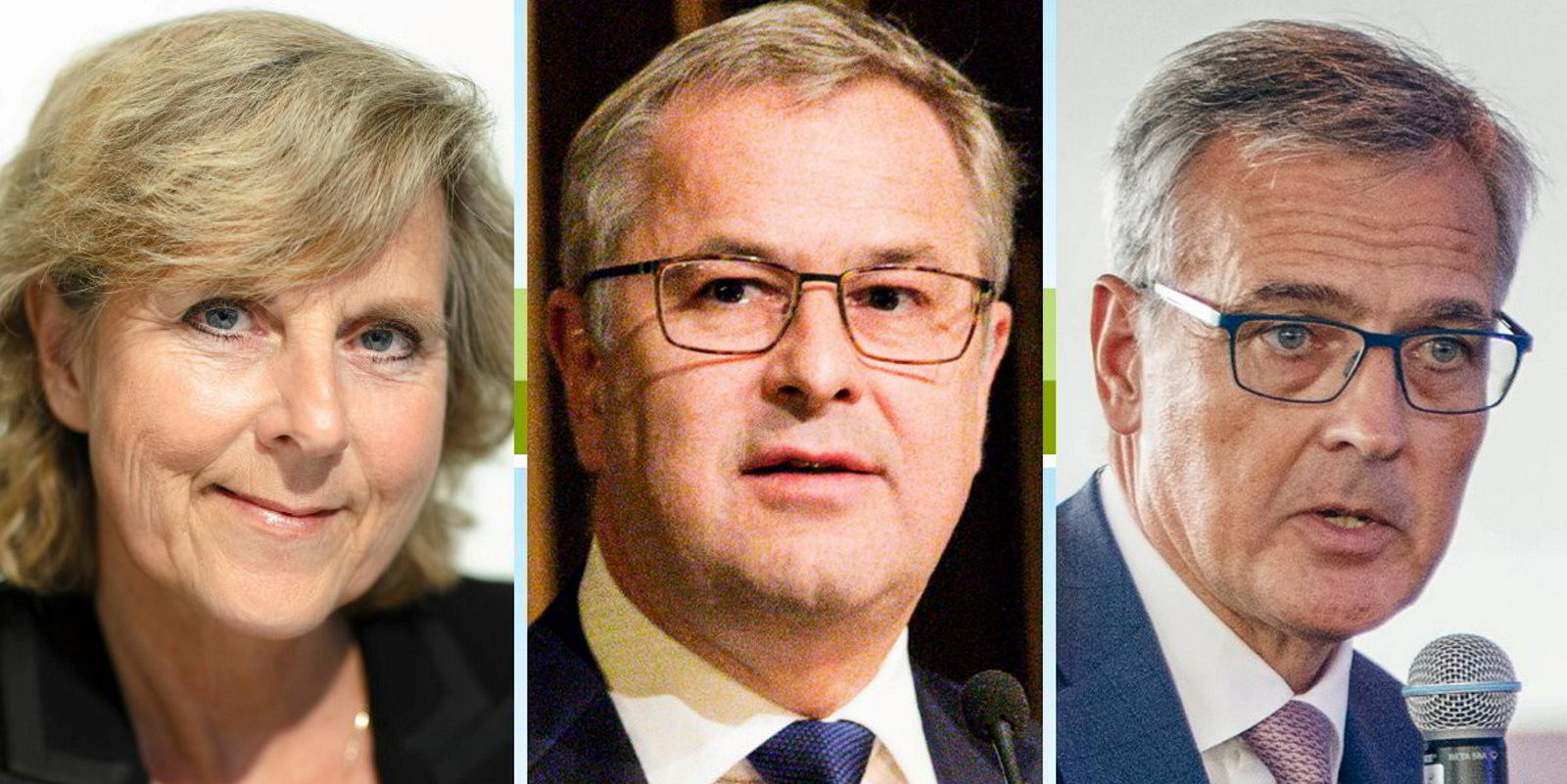
“The big picture in the future is we will certainly see two sources of energy for shipping that will be extremely important: green electricity from, eg, hydro, solar and wind, and maybe nuclear; and secondly, biomass. Those are the two primary sources of energy for shipping if you look long-term.
“From these two sources of energy you can produce green fuels where the life-cycle impact is basically good for the environment, compared with the fossil fuels we are burning today.” Those new fuels include hydrogen, green ammonia and biofuels, ethanol and biodiesel.
But it is hard to imagine how generation resources can be scaled up adequately to meet the huge demand from all parts of society and industry for those “green electrons” in the next two decades. That raises the question of managing the change with interim “transitional fuels”.
He likens it to walking in the hills: “We can see the green valley and hilltop on the other side of the pass, and can understand it’s very nice over there. But how do we get there?”
It will be difficult, he acknowledges, but “blue fuels” derived from carbon sources may have an important role to play as part of this transition. And that will define the answer to the critical question facing shipowners about which fuel choice to invest in today for new tonnage.
Cerup-Simonsen admits all owners need to face up to the dilemma. “I would advise shipowners there is not one silver bullet solution. What they should think about is multi-fuel flexibility for the future,” he suggests in answer to which fuel solution he would recommend today.
With the likelihood that a handful of fuels are going to play a role, the choice is whether to build a ship for those fuels, prepare your ships to be retrofitted, or do nothing.
Fast-tracking puts speed before accuracy, but there needs to be urgency to move forward
Bo Cerup-Simonsen
“It is going to be up to your own risk assessment, which is closely tied to the type of business you’re running.” But he adds: “It is interesting to see ships now being designed to be built with multi-fuel capabilities, and I believe we should soon be seeing fleets prepared for green fuels.”
One choice is for engines able to burn ammonia — first blue ammonia, before switching in time to green ammonia. Another is for LNG to migrate to green methane, and LNG carriers perhaps being adapted to carry other fuels, such as ammonia or methanol.
Clear life-cycle analysis of the carbon footprint of blue fuels will be essential to stop people gaming the system and exploiting the financial benefits of avoiding the higher costs of green fuels, Cerup-Simonsen warns.
“One of the things we have to get in order very soon is agreement on how we measure the impact of these future fuels depending on their production value chain.
“We need to have standards for planning and we need to have standards for execution. We need to have a system that we can document and verify, since the incentives to do something you shouldn’t do are going to be very, very high with the high costs of future fuels,” he reflects.
Cerup-Simonsen believes that attention on decarbonisation will increase in the coming months and years, accelerating the rapid pace of change. This year’s pivotal United Nations COP26 meeting in Glasgow, Scotland, in November will focus attention on speeding up the International Maritime Organization regulatory process.
“The public sector is important because it gets decarbonisation going, with domestic shipping now being counted in national carbon budgets,” he says. “Furthermore, we need states to develop regulation in IMO.”
That will be one of the two main drivers to set the framework to take carbon out of shipping. The other is the actions of business.
“It will be driven by industry leadership. That is, big companies going beyond compliance and regulation to find ways of creating zero-carbon shipping and having customers pay a premium for that,” he says.
“It is really the dynamic between industry leaders and nations. Shipping is a global business with a highly decentralised structure. We need to engage nations and leaders everywhere to make this happen. This is why we need to reach out.”
With that, our hour-long interview is almost up and he needs to return to work. “I just feel extremely privileged to be able to work with these people on this meaningful mission,” he says of the team he has gathered.
“That is what I am most happy about. We have an extremely strong team with a lot of people a lot smarter than me, and they bring so much energy, skill and intellect to the table.”
